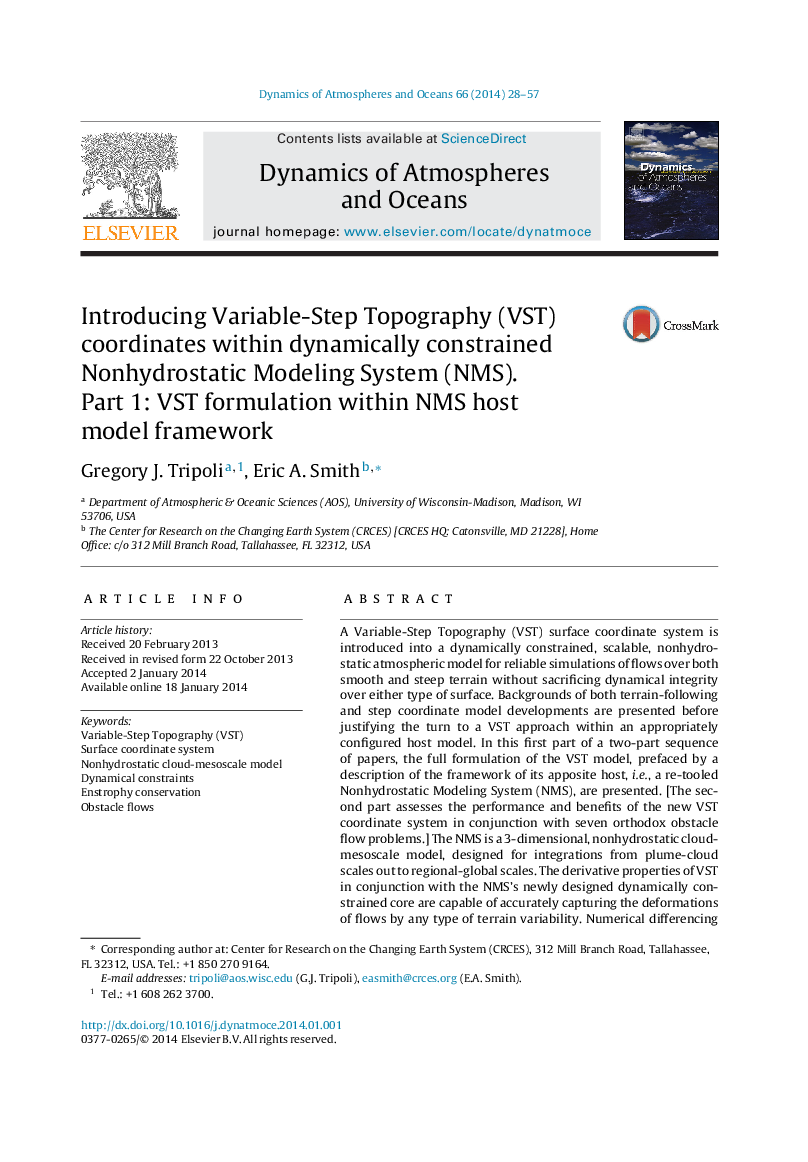| کد مقاله | کد نشریه | سال انتشار | مقاله انگلیسی | نسخه تمام متن |
|---|---|---|---|---|
| 4674028 | 1634224 | 2014 | 30 صفحه PDF | دانلود رایگان |

• Variable-Step Topography (VST) surface coordinate system introduced into Nonhydrostatic Modeling System (NMS), a regional/mesoscale model.
• Detailed description of new version of host NMS model described, including its dynamical conservation constraints.
• Conservation of mass, momentum, energy, vorticity and enstrophy used for effective application of VST coordinates on obstacle flow problems.
• VST formulation combines advantages of both terrain-following and step coordinate systems without suffering either of their disadvantages.
A Variable-Step Topography (VST) surface coordinate system is introduced into a dynamically constrained, scalable, nonhydrostatic atmospheric model for reliable simulations of flows over both smooth and steep terrain without sacrificing dynamical integrity over either type of surface. Backgrounds of both terrain-following and step coordinate model developments are presented before justifying the turn to a VST approach within an appropriately configured host model. In this first part of a two-part sequence of papers, the full formulation of the VST model, prefaced by a description of the framework of its apposite host, i.e., a re-tooled Nonhydrostatic Modeling System (NMS), are presented. [The second part assesses the performance and benefits of the new VST coordinate system in conjunction with seven orthodox obstacle flow problems.] The NMS is a 3-dimensional, nonhydrostatic cloud-mesoscale model, designed for integrations from plume-cloud scales out to regional-global scales. The derivative properties of VST in conjunction with the NMS's newly designed dynamically constrained core are capable of accurately capturing the deformations of flows by any type of terrain variability. Numerical differencing schemes needed to satisfy critical integral constraints, while also effectively enabling the VST lower boundary, are described. The host model constraints include mass, momentum, energy, vorticity and enstrophy conservation. A quasi-compressible closure cast on multiple-nest rotated spherical grids is the underlying framework used to study the advantages of the VST coordinate system. The principle objective behind the VST formulation is to combine the advantages of both terrain-following and step coordinate systems without suffering either of their disadvantages, while at the same time creating a vertical surface coordinate setting suitable for a scalable, nonhydrostatic model, safeguarded with physically realistic dynamical constraints.
Journal: Dynamics of Atmospheres and Oceans - Volume 66, June 2014, Pages 28–57